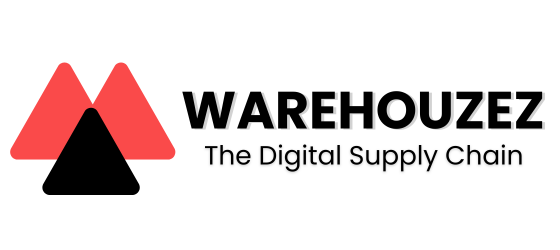Top 10 Types of Inventory Management: Streamlining Your Business for Maximum Efficiency
Top 10 Types of Inventory Management: Streamlining Your Business for Maximum Efficiency
Inventory management is the process of keeping track of, managing, and replenishing the products that a business sells. It ensures that a business has the right products, in the right place, at the right time. It is an integral part of running a successful business, and having the right type of inventory management system in place can mean the difference between success and failure. There are many different types of inventory management systems available, and each has its own advantages and disadvantages.
In this blog post, we will explore the top 10 types of inventory management systems, and discuss how they can help streamline your business for maximum efficiency.
What is an Inventory Management?
Inventory management refers to the process of tracking, controlling, and managing stock levels. It involves monitoring stock levels to ensure that businesses always have the right items in stock and that they are not overstocked or understocked. Inventory management also includes ordering, stocking, tracking, and reporting stock items. It is an important part of the supply chain process, helping businesses to maximize efficiency and reduce costs.
What is Inventory Management System?
Inventory management systems are software tools used to track and manage inventory levels, orders, sales, and deliveries. The systems are used to monitor stock levels, control product costs, and ensure that products are available for customers. The systems can also be used to automate the process of restocking, which can save time and money for businesses. Inventory management systems are essential for successful supply chain management.
Top 10 Types of Inventory Management
1. First-in, First-out (FIFO)
This inventory management system involves selling the oldest stock first, so that the newest stock remains in the warehouse the longest.
2. Last-in, First-out (LIFO)
The opposite of FIFO, this system is used when the newest stock should be sold first, like with perishable goods.
3. ABC Analysis
ABC Analysis involves categorizing inventories based on value, so that the most valuable items are monitored and managed more closely than the least valuable ones.
4. Just-in-Time (JIT) Inventory
It is indeed a popular method that is used to reduce stock levels by only ordering what is needed and when it is needed.
5. Economic Order Quantity (EOQ)
This system is used to determine the optimal amount of inventories to order in order to minimize costs.
6. Kanban
This system is based on a “pull” system where stock is only replenished once it has been depleted.
7. Cycle Counting
Cycle counting is a cutting-edge technique that incorporates regularly counting inventories in order to maintain accurate records and detect discrepancies.
8. Point-of-Sale (POS) System
This system is used to track and manage sales transactions and inventories in retail stores, restaurants, and other places.
9. Barcoding
Barcoding is a method of inventory management that uses bar codes to identify products, track stock levels, and store data related to inventory.
10. Radio Frequency Identification (RFID)
RFID is an incredible technology that uses radio waves to identify and track inventory items. It can be used to track the location and movement of goods within a warehouse or a storage facility.
How to Choose the Ideal Inventory Management System
Picking the ideal inventory management system is a crucial decision for any business. The ideal system should provide the tools to track and manage inventories in an efficient and cost-effective manner. The first step is to evaluate the current system in place and determine the specific needs of the business. Consider the size of the business, the current stock volume, and the goals of the business. Research different types of systems and identify the features that best meet the business’s needs. Once a system is selected, it is important to ensure the system is compatible with any existing software or systems that are already in place. Finally, ensure the inventory management system has the necessary training and support available for employees to effectively use the system.
Importance of Inventory Control
Inventory management is certainly a critically necessary component of any successful business. It is responsible for overseeing the flow of goods into and out of a business, as well as keeping track of the quantity and quality of the items in stock. By managing stock levels effectively, businesses can ensure that they have the right products in stock to meet customer demand, while also controlling costs and maintaining efficient operations. Inventory management can help businesses reduce costs, create a more efficient supply chain, and improve customer service.
Tried-and-Tested Tips and Techniques for Inventory Management
1. Perform regular inventory counts: Carry out regular, systematic physical counts of all items in your stock to ensure accuracy.
2. Use barcode technology: Barcodes can certainly be used to track stock levels in the most accurate and cost-effective manner.
3. Implement cycle counting: This process allows you to count and track the stock one section at a time, enabling you to stay on top of your inventory without having to do a full physical count.
4. Implement an automated inventory management system: Automated inventory management systems can help streamline the process of tracking and managing inventory, allowing you to focus on other tasks.
5. Set up reorder points: Establish reorder points for each item in your inventory to ensure that you always have the right amount of stock on hand.
6. Utilize safety stock: Safety stock allows you to keep extra stock on hand to provide a buffer against unexpected spikes in demand or supply chain disruptions.
7. Analyze inventory turnover: Monitoring inventory turnover will allow you to identify any items that are not selling as well as you hoped, so you can adjust your stocking and ordering accordingly.
8. Utilize industry-edge systems: Using inventory management software can make it easier to track and manage your inventories. This software can help you stay on top of your inventory levels, plan for future orders, and manage your supply chain.
Bottom Line
Inventory management has come a long way from the days of manual tracking and recording. With the development of technology, businesses now have access to a plethora of digital tools to help them manage their stock more efficiently. By utilizing the top 10 types of inventory management, businesses can streamline their operations and enjoy maximum efficiency. With the right system in place, businesses can save time, money, and effort, while also improving customer satisfaction.



